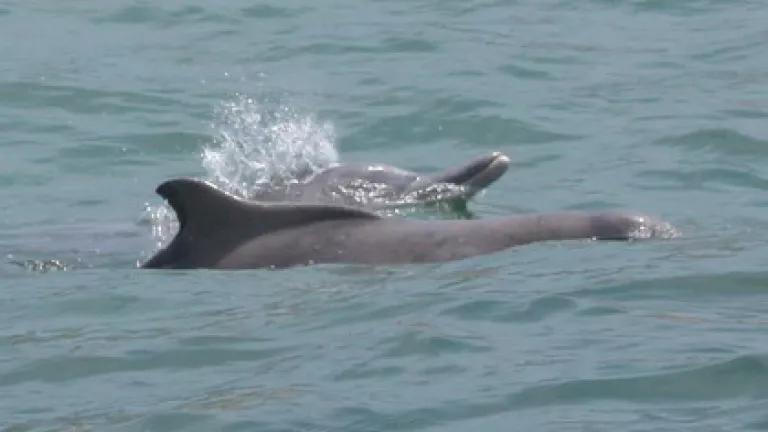This Week in Whales: Peru Promises Crackdown on Dolphin Slaughter; Researchers Identify New Humpback Dolphin Species; Dolphins as Muses for Innovation...

News in the world of whales this week (or close to it):
- The recent release of horrifying, graphic footage of Peruvian fishermen slaughtering dolphins to use as shark bait has prompted promises from Peruvian officials to crackdown on the inhumane, wasteful, and illegal practice. Hopefully the government's announcement is more than a PR move.
- New genetic studies reveal that there are four distinct humpback dolphin species. One species lives along the west coast of Africa; another lives along the east coast of Africa and in the Indian Ocean along the coasts of India and the Middle East; a third lives along the coasts of Southeast Asia; and the last—a new to science species—lives along the coasts of northern Australia and the waters of New Guinea. These new findings should lead to reclassifying the conservation status of the four species. While some of the species are currently listed as “near threatened,” they may all be vulnerable to extinction as this research shows fewer opportunities for cross breeding if genetic pools get too small. Let’s hope this research spurs renewed conservation efforts. Gotta say, it’s pretty cool that the ocean still holds some 250-pound secrets.
- Dolphins have inspired a lot of scientific innovation lately. These researchers developed a computer algorithm based on the Parson's Code that quickly and reliably identifies dolphin's "signature whistles," or names. The tool will help classify and study dolphins. Sounds like Shazam for dolphins, Cool. These scientists have modeled a new radar system called "twin inverted pulse radar" (TWIPR) after the way that dolphins use echolocation to distinguish between "targets" and "clutter" while hunting. TWIPR will be used to detect hidden explosives underwater. This New Zealand scientist's "Audification of Ultrasound for the Detection of Environmental Obstacles" (AUDEO), will help the blind "see" by exploiting the Doppler effect and is inspired by dolphins' use of echolocation to navigate underwater. The system operates at frequency that no one else can hear, making it more socially acceptable than previous experiments in echolocation tools for the blind. Keep inspiring us dolphins!
- Canada's federal government has just published a final recovery strategy for the endangered humpback whales that identifies four areas of critical habitat areas off the coast of British Columbia and recognizes oil spills, overfishing, shipping traffic, seismic exploration, and sonar use as threats to those habitats. As I blogged last week, shipping traffic in British Columbia puts marine mammals at risk of ship strikes and inhibited communication—but, as the Canadian government noted, that's just one threat to whales. Hopefully these critical habitats get the protection to which they are now legally entitled.
- I've blogged extensively about the dolphin unusual mortality event on the Eastern seaboard, which officials claim is caused by morbillivirus but has certainly been exacerbated by human degradation of these coastal ecosystems. The mass strandings have just spread to South Carolina.
Meanwhile, this week in Wales...
A 5p (around 8 cents) charge for single-use plastic bags instituted in 2011 has reduced their use by Welsh shoppers by 81 percent—which is a great thing! However, some officials are concerned that shoppers are using heavier-duty plastic tote bags (sold in stores for 5p to 10p) as single-use items, rather than reusing them. Welsh officials want to set a minimum price for tote bags to encourage shoppers to reuse them rather than tossing them after one shopping trip.
This blog was written with NRDC’s Marine Mammal Protection Project’s assistant, Lauren Packard. Thanks Lauren!
Photo credit: Tracy E Meintjes for Creative Commons

